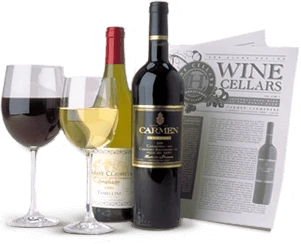Fermented in the bottle on its lees for a full 36 months, the light, lovely, and deliciously dry Lhuillier Brut Tradition (80% Pinot Noir, 20% Chardonnay) comports itself as a classic champagne. Displaying a pale golden color and a delicate mousse of tiny bubbles, the Lhuillier Brut Tradition attracts the eye and beguiles the nose from the first sip. In the mouth, the wine’s mousse reveals delicate apricot and peach flavors along with hints of brioche and a welcome minerality that leaves the palate both refreshed and begging for more. For optimal enjoyment, all champagne should be well chilled prior to opening (35°-38° F) and allowed to slowly reach a more ambient temperature in the glass. Anticipated maturity: 2022-2026. Enjoy!
Many would consider Lhuillier’s Brut Tradition to be the quintessential aperitif, yet it shines equally well at table throughout a meal. Fish, scallops, crab, lobster, oysters, salmon, and even sushi and sashimi make delicious companions to Lhuillier’s Brut Tradition. For starters, consider a light seafood salad or smoked salmon rounds sprinkled with capers, cream cheese, and a touch of onion. As a main course, steamed lobster and Alaskan king crab legs served with warm drawn butter provide tasty accompaniments. Fresh garden vegetables and light leafy salads offer equally satisfying accompaniments. For those among us for whom less is more, a simple plate of freshly cut slices of apple and pear with creamy cow’s milk cheeses such as Muenster, Neufchatel, and Port Salut make fine complements, too. Enjoy the charming Lhuillier Brut Tradition early and often. Bon Appétit!
Located in the tiny commune of Fontette in southern Champagne, the Lhuillier family have been growers and makers of champagne since 1876. Passed down from father to son and now managed by the Lhuillier’s son-in-law Sebastien, the family fashions a bevy of traditional champagnes from the appellation’s two prime grape varieties, Pinot Noir and Chardonnay. Various cépages or blends are made from the family’s roughly 74 acres of vines in the Aube, including Brut Rosé, Brut Tradition (the house’s most traditional champagne and this month’s feature), Cuveé 1876, and Cuveé Fleur de Lys.
Although lesser known than the Montagne de Rheims and Vallée de la Marne, the Aube has been a major source of Pinot Noir for small grower producers as well as for the well-known champagne houses further north. The Aube is also the more rural, picturesque part of Champagne. It has a long illustrious history and in former days nearby Troyes was the site of one of Europe’s great fairs, specializing in the production and sale of silk and other fabrics. Having worked in the Aube as a young man, I can attest to the Aube’s charm and its plethora of fine champagnes.
Champagne is an ancient province of France, a pastoral land of meadows and streams and, most importantly, chalk hills upon which some of the world’s choicest grapes are grown. Champagne’s boundaries are delimited by law and its wines strictly regulated by the laws of Appellation Contrôlée as to permitted grape varieties (primarily Chardonnay, Pinot Noir, and Pinot Meunier), yield, production, and quality. Yet, Champagne is more than a place; it is also a wine. In fact, champagne is several different wines – only the most recognizable of which is white and bubbly.
Although champagne can be still or sparkling, white or red, and even rosé, the wine the world has come to know best as champagne is always sparkling. So synonymous now is the name champagne with sparkling wine that the nomenclature has been applied generically and indiscriminately to any wine that bubbles, much to the regret of the champagne producers. Authentic champagne comes only from the Champagne district of France and meets all the approved legal requirements and standards of production, including absolute adherence to the painstaking Méthode Champenoise, which requires that secondary fermentation take place in the bottle for sparkling champagne.
The magic of champagne (at least the bubbly kind that now encompasses the overwhelming majority of wine produced in Champagne) comes from encapsulating the bubbles in the very bottle in which the wine starts its life. In the old days, long before the advent of technical wine equipment, temperature control, and central heating, the slow fermentation of grapes in the cool Champagne autumn was often interrupted by winter’s chill. With the onset of winter, fermentation would stop completely or at least appear to cease, so the wine was bottled and prepared for distribution. However, the following spring temperatures would rise and the fermentation process would begin anew. This delayed completion of fermentation is known as secondary fermentation. Secondary fermentation produces the beautiful bubbles and tiny streams of carbon dioxide that have come to enchant several centuries of well-wishers and hedonists. What began as serendipity is now one of the wine world’s highest art forms.
Since the 17th century, several historical personages have contributed to the development of champagne, including the renowned Dom Pérignon; the legendary blind monk and cellar master of the Champagne Abbey of Hautviller, Frère Oudart; and later the widow Clicquot. Thanks to centuries of improvements and some of the first true brand name marketing, champagne enjoys today a special place in western culture. Champagne has been called the Belle of the Ball and has come to symbolize conviviality, hope, and all that is good in life and love. What would a wedding or any other festivity be without champagne? But why wait for such an occasion? Champagne is the perfect way to start an evening. Pop the cork and join in the fun.

Enjoy Limited Production Estate
Bottled Wines
Discover limited production estate bottled wines such as Vergenoegd's internationally
acclaimed 2005 Cabernet Sauvignon, imported exclusively for our members.

